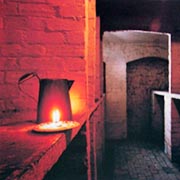18 Brunswick Square
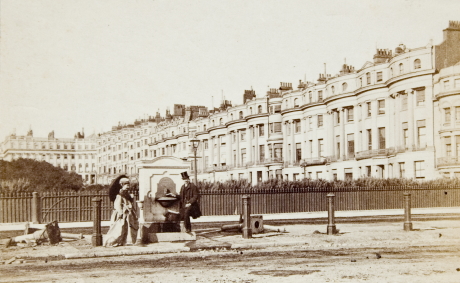
East side of Brunswick Square in the 1860s with the ‘new’ water fountain
We do not have any details about the physical construction of number 18 Brunswick Square but we do know from the detailed lease agreement of 1893 that the internal layout of the house follows a similar pattern to other properties in the square.
It is a six storey house, with four chambers on the top floor. On the next floor down, there are three chambers: one is a bathroom and there is a WC on the half-landing. On the next floor down, there are three chambers. The next floor down is the first floor, where we find the front drawing room (which has west facing windows) and a back chamber. On the ground floor there is the dining room, which is described as “opening out”. This implies that there were not two rooms, but possibly a partition or similar. The dining room includes a “dinner lift”. On this floor there is also the entrance hall and another WC together with a back chamber.
In the basement is the housekeeper’s room, the butler’s pantry, a servants’ hall and the basement passage. There is a WC in the yard, the kitchen, scullery and a wash house. This is one of the houses that had its own stables, which consisted of a four-stall stable, a harness room and rooms over.
At the time of the first census, in 1841, the head of household is William Powell Rodney, a 46 year old man of independent means born in Hanover Square, Middlesex. Also living in the house are his 35 year old wife Eliza and their two daughters, Ann age 15 and 10 year old Caroline. The Rodneys had a son, also called William Powell Rodney, born in 1829. At the time of the census he was away at Park Place Establishment for Noblemen Sons in Mitcham. The family had 7 servants: Emily James (age 35), Maria Lea (also age 35), Mary Beason (age 30), Ann Brook (age 20), Rachel Profers (age 19), Fanny Goddard (age 24) and James Weager (age 23). (Incidentally, there is also a James Weager in the 1851 census, working as a butler at 27 Brunswick Square.)
It isn’t clear how long the Rodney family lived here but they were no longer resident the next time we know something happened in the house. Even in the twenty-first century, when there is access to contraception, social security and a national health service, many women live in fear of unwanted pregnancy. It must have been far worse in 1845. However this is what happened to Sarah Wathen, a young lady’s maid. There was a lot of sensationalised newspaper coverage about her at the time, across the whole country. Sarah was accused of murdering her new-born baby daughter, who she had immediately beforehand delivered herself, alone, in her room (probably one of the chambers on the top floor). An inquest into the child’s death was held at the Kerrison Arms on 18 August. One of the doctors who completed the post-mortem was Mr E J Furner, a surgeon who much later owned and lived in number 47 Brunswick Square. The jury returned a verdict of wilful murder and Sarah was committed to Lewes Gaol for trial at the next Assizes.
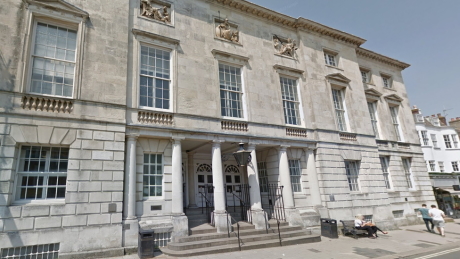
Lewes Crown Court in the 2020s
At her trial in 1846, the murder charge was dismissed because there was insufficient evidence that the baby had been alive at birth. However, she was found guilty of concealing the birth of a child and sentenced to 12 months’ imprisonment. It is impossible to say what happened to her after she completed her sentence, as there are no more records of Sarah Wathen.
Unfortunately the house was unoccupied at the time of the next census. But by 1852 the latest occupants, the Warners, had moved in. Simeon Warner was a landed proprietor born on 25 April 1786 in Deptford, Kent. His wife Ann Bryan Warner was born in 1790 in Middlesex. At the time of the 1861 census their unmarried 32 year old son Frederick, a stock broker born in Blackheath Kent, is living with them. They had six servants, whose names are too hard to decipher. There were also some family visitors: Eliza Hamilton Warner, daughter-in-law, age 36 born in Bengal, East Indies plus her children: 15 year old Annie Henrietta , 13 year old Louisa Mary, 9 year old Eliza Oldfield and 5 year old Mary Anne, all born in Bengal. Eliza senior is married to Edward Charles Warner, born 1824. He’s in the Hussars, Bengal Light Infantry. As an interesting aside, there is another entry on the 1861 census which seems to relate to number 18 but isn’t part of the main household. This was a young woman (possibly called Frances Criswick, age 18, from Somerset). It is unclear who she was or what her role was in the house. Perhaps she lived in the stables, which we know had rooms above.
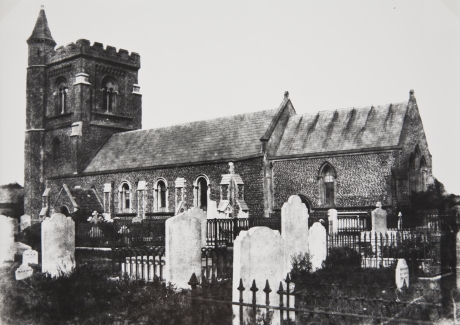
St Andrew’s Church, Hove, in the 1860s
Mr Warner died on 2 May 1866, leaving around £7.5 million in today’s money and his wife died in October 1869. They are both buried in St Andrews Old Church in Hove. The contents of the house were auctioned in 1870, following Ann’s death. A detailed list of the items for sale, from the Brighton Gazette, gives us a peek into their lives. There is much rosewood and mahogany furniture, including two bookcases: one was 7 feet long with glazed doors and cupboards beneath and the other was 14 feet long and had brass trellis doors on the lower part. There were cut glass chandeliers, marble-topped washstands and dressing tables plus oil paintings, engravings and fine china. There was even a large refrigerator in the basement! My favourite item, though, is a bagatelle board.
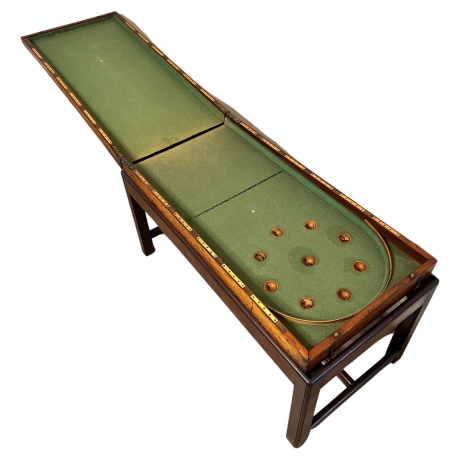
A traditional bagatelle board
The next head of household, Dr William Withers Moore, is a very interesting and controversial character. He had recently remarried, in June 1870, and his new wife was the widow Elizabeth Coope. Dr Withers Moore leased the house for 21 years the following October. As with modern leases, the document stipulates all kinds of requirements relating to the maintenance and upkeep of the property and there are restrictions on what the tenant is allowed to do. Specifically, Dr Withers Moore was not allowed to make “any shop window” in the property but was allowed to put “Dr Withers Moore” on the front door. The annual rent was £220 per annum (over £13,500 in today’s money) and he was permitted to terminate the lease early, after 7 or 14 years.
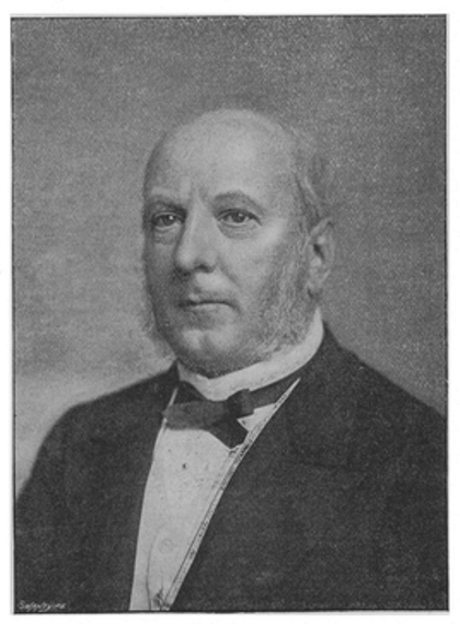
Dr William Withers Moore
The 1871 census provides more details about the family and their household. William Withers Moore was by then a 47 year old physician (born on 13 May 1824) from Doncaster and his 39 year old wife Elizabeth was from Bury, Suffolk. There are 5 daughters listed and we know that Elizabeth was not their mother. They are Caroline Moore (age 14) born in Doncaster, Evelyn G Moore (age 12) born in Bury, Catherine B Moore (age 11) born in Doncaster, Constance E Moore (age 10) born in Edinburgh and Gertrude Moore (age 8) born in Brighton. The family is completed by Elizabeth’s daughter Gertrude Coope (age 9), born in Norbiton, Surrey. There are 7 servants: Louisa (surname illegible) a 26 year old governess from Paris; Susan Barnett (age 46), a cook from Brompton Middlesex; Charlotte A Gale (age 32), a lady’s maid from London (all 3 unmarried); Emma Woodford (age 33), a widow and lady’s maid from Carisbrooke, Isle of Wight; Ann Standen, unmarried, age 33, a house maid from West Chiltington, Sussex; Mary A Pates (age 24), also a house maid, from Hatfield, Herts and Elizabeth Day (age 38), a nurse from Cambridge.
As with the previous census, there was also another entry in 1871 which seems to relate to number 18 but isn’t part of the main household. This time the inhabitants were Ann Holmwood, age 17, a kitchen maid from Buxted, Sussex and James Wileman, a 27 year old manservant from Dorking, Surrey. They probably inhabit the same area as Frances did 10 years earlier.
The Withers Moore family were obviously happy to stay in the house because they were still there in the 1881 census. Caroline, Constance and Gertrude are still at home and have been joined by a new half-sister called Margaret, age 9. The family now have 8 servants: Susan Barnet is still there, now age 60; Maria E Day, a 47 year old lady’s maid from Cambridge (is this possibly Elizabeth Day, from 10 years earlier?); Elizabeth Blackmore, a 29 year old lady’s maid from Exeter; Elizabeth Millhouse, a 37 year old housemaid from Cheriton Kent; Jeanette Stevens, a 21 year old housemaid from Lewes; Eliza Moore, a 22 year old kitchen maid from Rye (all unmarried); John Jones, a married 40 year old butler from Patching and Walter Hurrell, an unmarried 20 year old footman from Maldon, Essex.
Dr Withers Moore’s happiness was cut short in September 1883 when his “beloved wife” died, aged 51. By now, you are probably wondering why he was controversial. In 1886 he sparked a lively debate when he made a speech about the higher education of women. At the time, he was the president of the British Medical Association (BMA) and the speech was made to the BMA conference in Brighton.
Dr Withers Moore was strongly opposed to the idea. His speech included a wide variety of observations and comments, largely from a paternalistic and patronising point of view. There were the sentimental views that women “should be shielded and sheltered” from the battles of life. Higher education would “hinder those who would have been the best mothers from being mothers at all”. “No training will enable themselves to do what their sons might have done.” There are some extraordinary comments about educated women producing weaker children: “The reproductive power means the power to bear a well-developed infant and to supply that infant with the natural food for the natural period. Most of the flat-chested girls who survive their high-pressure education are unable to do this.” He goes on to say that the pressure of education will lead to women being incapable of maternity and thus “the human race will have lost those who should have been her sons”. Apparently “women are made and meant to be, not men, but mothers of men”.
As you can imagine, these views were both accepted and challenged to various degrees. One striking response was from Millicent Fawcett, who said that Dr Withers Moore “had endeavoured to popularise the old fallacy that the only proper object in life for women was to become wives and mothers.” This was certainly attainable with moderate ease “but it could not be considered as satisfactory. Jezebel was a wife and a mother and so was Lucrezia Borgia”.
Three years later he obviously decided that the time had come to move on from Hove and he became an active member of the community in Burgess Hill (which is about 8 miles away). He transferred the lease of the house to another doctor, James Alexander Menzies. The tenancy agreement made in 1891 by the latter extended the lease until 1893 and shows that Dr Menzies’ annual rent was £200. Modern readers will probably be amazed that, after 21 years, the rent has gone down rather than up. However, it is worth noting that £200 then is worth almost £16,500 in today’s money. So although the face value of the rent has gone down, in our terms the “cost” has increased.
And what do we know about Dr James Alexander Menzies? In the 1891 census he is listed as the head of household; a 55 year old registered physician from Scotland. He lives with his wife Lavinia E Menzies, age 54 from Billericay Essex and their unmarried 33 year old daughter Katherine E Menzies (born in Guernsey). Also present is James’s mother Maria E Menzies, a 73 year old widow born in Jamaica. There are only 2 servants, both unmarried: 18 year old Louisa Ford from Brighton and 15 year old William Oliver. This is obviously a big change from when the Withers Moores lived in the house. Maria’s maiden name was also Menzies, hence there was some confusion about her family history. However, her father was Edward S Menzies, born in 1786. There is evidence that he owned some slaves in Jamaica but it is unclear whether the family received any “slave compensation” following the abolition of slavery. The Menzies did not live in the house for long and left at the end of the tenancy agreement in 1893.
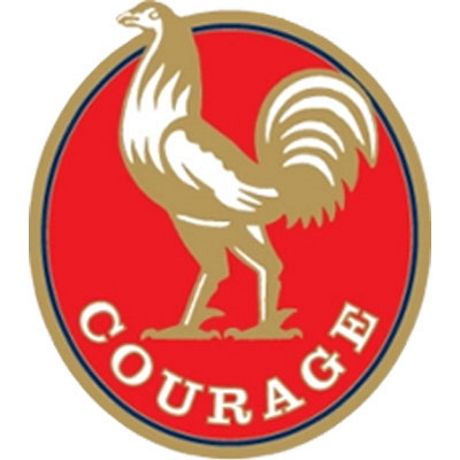
Courage Brewery Sign
The next arrival was Alfred Courage, born in 1834 (yes, he was related to the brewing family and his wife was Irene Ellen Whitbread, born in 1838). He took over the lease and this time the annual rent was £180, another reduction. £180 in 1893 is worth around £14,800 today. So this time there has been a reduction both in the actual cost and the modern equivalent. This is not a surprise, however. We know from a letter relating to number 47 Brunswick Square in 1899 that by this time it was difficult getting tenants or purchasers for properties in the square because people preferred “modern houses”. Alfred was born in Dulwich in 1834 and died on 23 Sept 1898 whist living in the house. He left just over £19,000 (worth about £1.5m today).
By the time of the next census, in 1901 the head of household was Haworth William Bartram, age 49 and a general merchant. He had been born in Adelaide, South Australia. It would probably have astonished Sir Ralph Darling, a former inhabitant of 39 Brunswick Square and former governor of New South Wales who died in 1858, that a man born in Australia would end up living in the square. Also living in the house with Haworth Bartram were his wife Edith, age 43 and born in Victoria as were 6 of the 7 children listed: Edith (age 20), Harold (age 17), Lillian (age 15), Beatrice (age 12) – she is also known as Constance which I believe was her given first name but she preferred to use Beatrice, her middle name, Dorothea (age 10), James (age 8) and Marjory (age 6). Marjory’s place of birth is missing. They have 4 unmarried servants whose names are mostly hard to decipher, apart from 14 year old Clara Johnson, from Angmering, who is a kitchen maid. The other servants are probably Ellen Wornham from Brighton (the census says she’s aged 36 but she is probably 40), a cook, Alice (surname unclear), a 29 year old from Wisborough Green and (first name possibly Ellen) Martin, age 19 also from Brighton.
It appears that Mr Bartram probably travelled to and fro between the UK and Australia. During the family’s time in Hove, both Edith and Beatrice married. There was a big feature about the latter in the Brighton Gazette, as one of the “weddings of the week”. Beatrice married Arthur Kerr Noverre and the article confirms that her father was present.
The 1911 census was completed by Edith Bartram. She says that she is married and has been for 31 years. They had 8 children, of whom 7 are still alive. Dorothea Hope and Harold are still living in the house. There are 5 servants but sadly no first names are given for them. They are Mrs Brown, a 45 year old cook born in Tottenham Middlesex; a single 24 year old parlour maid with surname Brown also born in Middlesex; N Martin a 29 year old house maid born in Brighton (possibly the same as in 1901, possibly called Naomi); J Smith a 22 year old under housemaid from Brighton and M Richardson a 19 year old kitchen maid from Brighton.
Haworth Bartram died on 13 December 1918 at Dorset Square Middlesex but his address is given as Bourke Street, Melbourne, Victoria, Australia. UK probate was not completed until 1925 although Australian probate took less than a year. It seems that Edith maintained her links with the UK. She lived until she was 88 years old and died at Uckfield, not far from Hove.
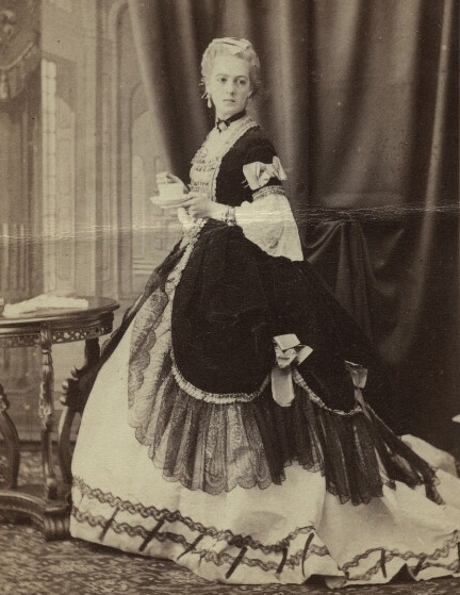
Lady Grey
The Bartrams were replaced in the house by Lady Georgina Chichele Grey (nee Plowden), who started living there in 1913. She was born in 1840 in Meerut, India and married Sir William Grey in 1865, in Calcutta. She lived in Brunswick Square until 1928 and died in Tunbridge Wells in 1936, leaving just under £14,000 (worth just over £700,000 today).
Research by Teresa Preece (December 2022)
Return to Brunswick Square page


